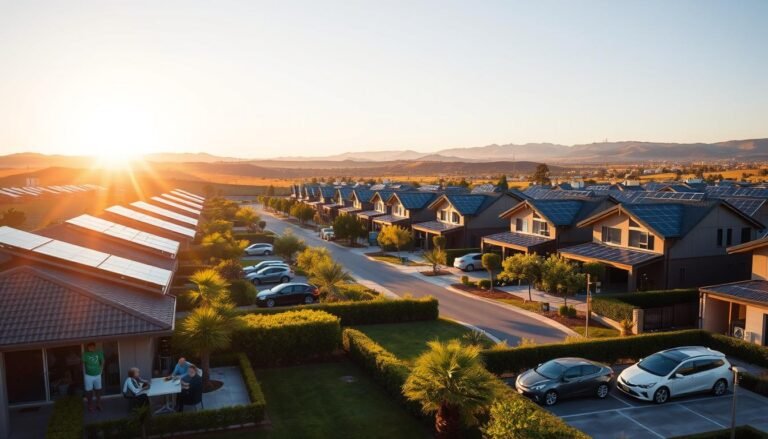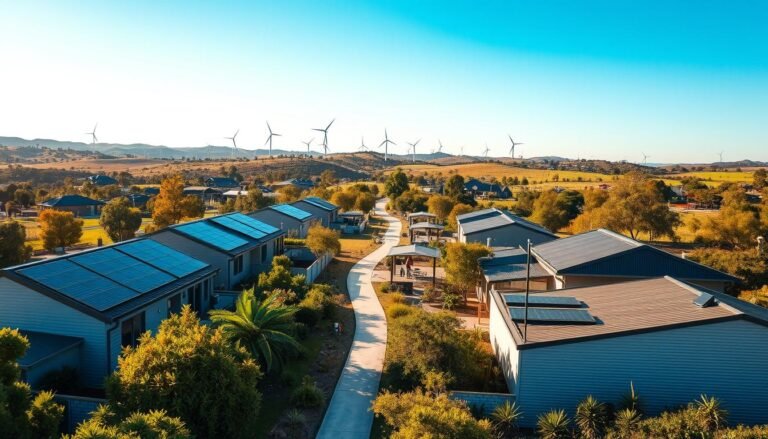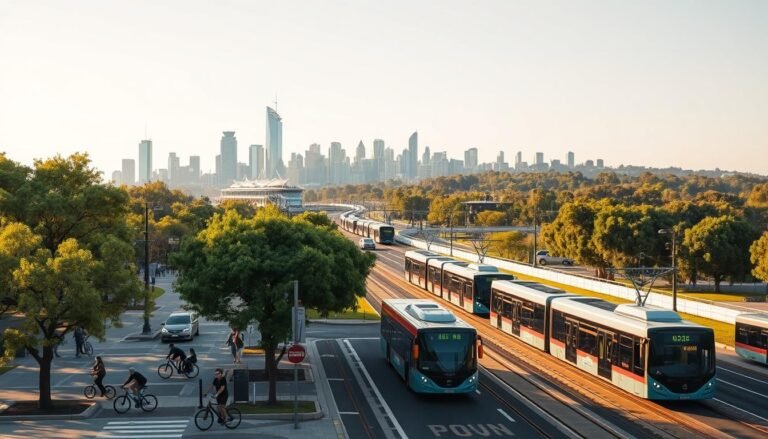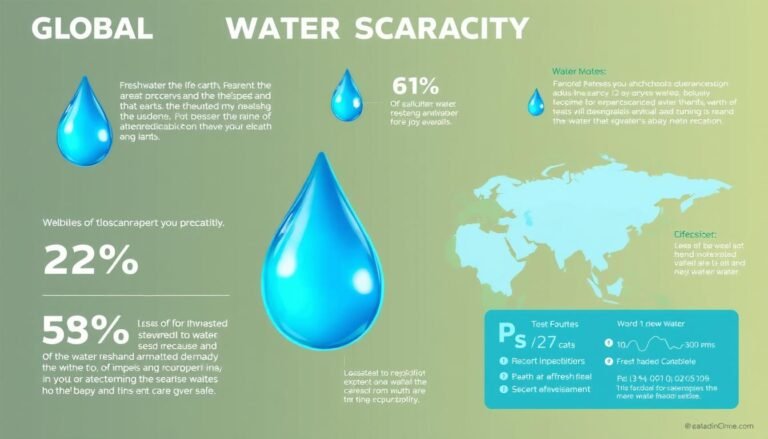As 2025 approaches, Australians are becoming increasingly aware of the importance of the green energy transition. The shift towards renewable energy is not just a global trend, but a crucial step for Australia’s environmental and economic future.
The current state of renewable energy in Australia is showing promising signs, with a significant increase in the adoption of solar and wind energy. This transition is vital for reducing our reliance on fossil fuels and mitigating the impacts of climate change.
Key Takeaways
- Australia is making significant progress in its green energy transition.
- Renewable energy sources are becoming increasingly cost-competitive.
- The transition is crucial for Australia’s environmental sustainability.
- Citizens play a vital role in the successful implementation of renewable energy policies.
- The shift to renewable energy is expected to create new job opportunities.
The Current State of Australia’s Energy Landscape
Australia’s energy landscape is evolving, with a notable increase in renewable energy penetration. As the country progresses into 2025, the energy mix continues to diversify, reflecting a gradual shift away from traditional fossil fuels towards more sustainable sources.
Energy Mix in 2025
The current energy mix in Australia is a blend of coal, gas, and renewables. As of 2025, the trend indicates a continued dependency on coal and gas, but with a significant push towards renewables.
Coal and Gas Dependency Trends
Historically, coal has been a dominant source of energy in Australia. However, there’s a noticeable decline in its share due to the rising competitiveness of renewables and policy shifts. Gas, on the other hand, is seen as a transition fuel, helping to bridge the gap between coal and renewables.
Renewable Penetration Statistics
Renewable energy, particularly solar and wind, has seen substantial growth. According to recent statistics, renewables now account for over 30% of Australia’s energy mix, a significant increase from previous years.
Regional Differences in Energy Sources
Australia’s energy landscape varies significantly across different regions, reflecting diverse natural resources and policy frameworks.
State-by-State Energy Profiles
| State | Primary Energy Source | Renewable Percentage |
|---|---|---|
| New South Wales | Coal | 25% |
| Victoria | Gas | 35% |
| Queensland | Coal | 20% |
As seen in the table, each state has its unique energy profile, influenced by available resources and regional policies.
Understanding Australia’s Green Energy Transition Goals
As Australia moves towards a more sustainable future, understanding the country’s green energy transition goals is crucial. The Australian government has outlined ambitious plans to reduce emissions and increase the adoption of renewable energy sources.
Federal Renewable Energy Targets
The federal government has set specific renewable energy targets to be achieved by 2030, aligning with the global effort to combat climate change. These targets include significant reductions in greenhouse gas emissions.
2030 and 2050 Emissions Reduction Commitments
Australia has committed to reducing emissions by 43% by 2030 and achieving net-zero emissions by 2050. These commitments are part of the country’s broader strategy to mitigate the impacts of climate change.
State-by-State Commitments
While the federal government sets overall targets, individual states have their own renewable energy adoption plans. Some states are leading the way, while others face challenges in transitioning away from fossil fuels.
Leading States in Renewable Adoption
States like South Australia and Tasmania are at the forefront of renewable energy adoption, with significant investments in solar and wind power.
Lagging Regions and Challenges
Regions that are heavily reliant on fossil fuels face significant challenges in transitioning to renewable energy. These challenges include economic impacts and the need for infrastructure upgrades.
| State/Territory | Renewable Energy Target | Progress Towards Target |
|---|---|---|
| New South Wales | 50% by 2030 | 35% |
| Victoria | 50% by 2030 | 40% |
| Queensland | 50% by 2030 | 30% |
Australia’s green energy transition is a complex effort involving both federal and state-level commitments. Understanding these goals and the progress towards them is essential for citizens to participate in and support the transition.
Key Drivers Behind the Renewable Energy Shift
Australia’s renewable energy shift is being fueled by a mix of climate change imperatives, economic benefits, and global climate commitments. As the country continues its transition to a more sustainable energy future, understanding these drivers is crucial.
Climate Change Imperatives
The pressing issue of climate change is a significant driver behind Australia’s renewable energy transition. With rising temperatures and more frequent natural disasters, the need to reduce carbon emissions has become more urgent than ever. Renewable energy sources like solar and wind power offer a cleaner alternative to fossil fuels, helping to mitigate the impacts of climate change.
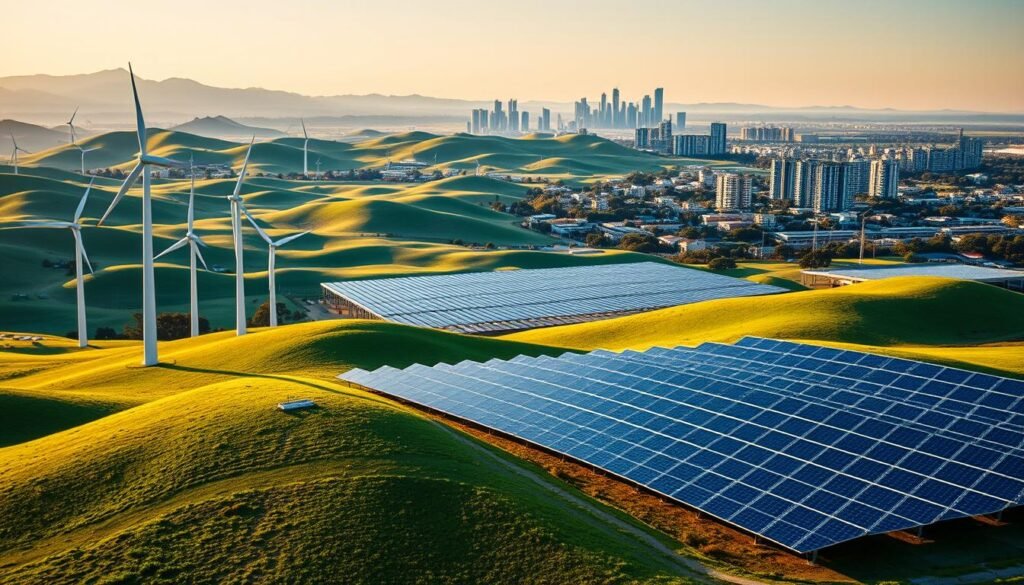
Economic Benefits and Opportunities
The shift to renewable energy is not only an environmental necessity but also an economic opportunity. The renewable energy sector is creating new jobs and stimulating investment in regional Australia.
Investment Figures and Growth Sectors
In recent years, Australia has seen significant investment in renewable energy projects. The growth sectors include solar energy, wind farms, and battery storage solutions. These investments are not only boosting the economy but also enhancing energy security.
International Agreements and Pressures
Australia’s commitment to international climate agreements, such as the Paris Agreement, is another key driver behind the renewable energy shift. These agreements put pressure on countries to reduce their greenhouse gas emissions and transition to cleaner energy sources.
Australia’s Global Climate Commitments
Australia has made significant commitments to reducing its carbon footprint. The country’s renewable energy targets are aligned with its international obligations, driving the transition to a low-carbon economy.
Solar Power Revolution in Australian Homes
The adoption of solar power is revolutionizing the way Australian homes consume energy. With the increasing awareness of renewable energy sources, homeowners are turning to solar power to reduce their reliance on traditional energy grids.
Residential Solar Adoption Rates
Australia has seen a significant surge in residential solar adoption over the past decade. Homeowners are increasingly opting for solar energy to power their homes.
Rooftop Solar Statistics and Trends
As of 2025, over 3 million Australian households have installed rooftop solar systems, with an average system size of around 6.5 kW. This trend is expected to continue, driven by decreasing solar panel costs and increasing electricity prices.
Financial Incentives and Rebates
The Australian government offers various financial incentives to encourage the adoption of solar power. These incentives make it more affordable for homeowners to install solar systems.
Small-scale Technology Certificates
Homeowners can claim Small-scale Technology Certificates (STCs) for their solar systems, which can be sold to recoup some of the upfront costs. The number of STCs available depends on the system’s size and location.
State-Based Solar Subsidies
In addition to federal incentives, some states offer additional subsidies for solar installations. For example, the New South Wales government provides interest-free loans for solar and battery installations.
New Solar Technologies for Homeowners
The solar industry is continually innovating, offering new technologies that integrate seamlessly into homes.
Integrated Solar Tiles and Building Materials
Integrated solar tiles are becoming increasingly popular, allowing homeowners to generate energy while maintaining their home’s aesthetic appeal. These tiles can replace traditional roofing materials, providing a sleek and efficient energy solution.
Wind Energy Projects Transforming the Grid
Wind energy is playing an increasingly crucial role in Australia’s transition to renewable energy. As the country moves towards a greener future, wind projects are being developed across the nation to meet the growing demand for clean electricity.
Major Wind Farms in Development
Several major wind farms are currently under development in Australia. These projects are not only contributing to the renewable energy mix but also creating jobs and stimulating local economies.
Key Projects by State
| State | Project Name | Capacity (MW) |
|---|---|---|
| Victoria | Mortlake Wind Farm | 530 |
| South Australia | Tungsten Renewable Energy Hub | 3000 |
| New South Wales | Bango Wind Farm | 244 |
Offshore Wind Potential
Australia’s offshore wind potential is vast and largely untapped. Projects like the Star of the South are pioneering the development of offshore wind in the country.
The Star of the South Project
The Star of the South project is one of Australia’s first offshore wind projects, planned off the coast of Victoria. It is expected to generate enough electricity to power hundreds of thousands of homes.
Regulatory Framework for Offshore Development
The development of offshore wind projects is supported by a regulatory framework that ensures environmental and social safeguards are in place. This framework is crucial for the sustainable development of offshore wind energy.
As Australia continues to transition towards a greener energy future, wind energy projects will play a vital role in reducing the country’s carbon footprint and achieving its renewable energy targets.
Battery Storage Solutions and Energy Security
As Australia continues its transition to renewable energy, battery storage solutions are becoming increasingly crucial for energy security. The ability to store excess energy generated from solar and wind sources allows for a more stable and reliable energy supply.
Home Battery Systems
Home battery systems are revolutionizing the way Australians store and use energy. These systems enable households to store excess solar energy generated during the day for use at night, reducing reliance on the grid.
Popular Models and Costs
Popular home battery models include the Tesla Powerwall and the Sonnen eco. Costs vary depending on the model and capacity, but expect to pay between $10,000 to $15,000 for a typical system.
Payback Period Calculations
The payback period for home battery systems depends on several factors, including energy usage patterns and local electricity tariffs. On average, households can expect a payback period of 5 to 7 years.
Grid-Scale Storage Projects
Australia is also seeing significant investment in grid-scale storage projects. These large-scale batteries are crucial for storing excess energy and maintaining grid stability.
Big Battery Developments Across Australia
Notable grid-scale battery projects include the Hornsdale Power Reserve in South Australia and the Victoria Big Battery. These projects are enhancing energy security and supporting the integration of renewable energy sources.
Virtual Power Plants
Virtual power plants (VPPs) are networks of distributed energy resources, including home battery systems, that can be controlled to provide grid services.
How Households Can Participate
Households with solar and battery systems can participate in VPPs by registering with energy retailers or VPP operators. This can provide additional income streams and support grid stability.
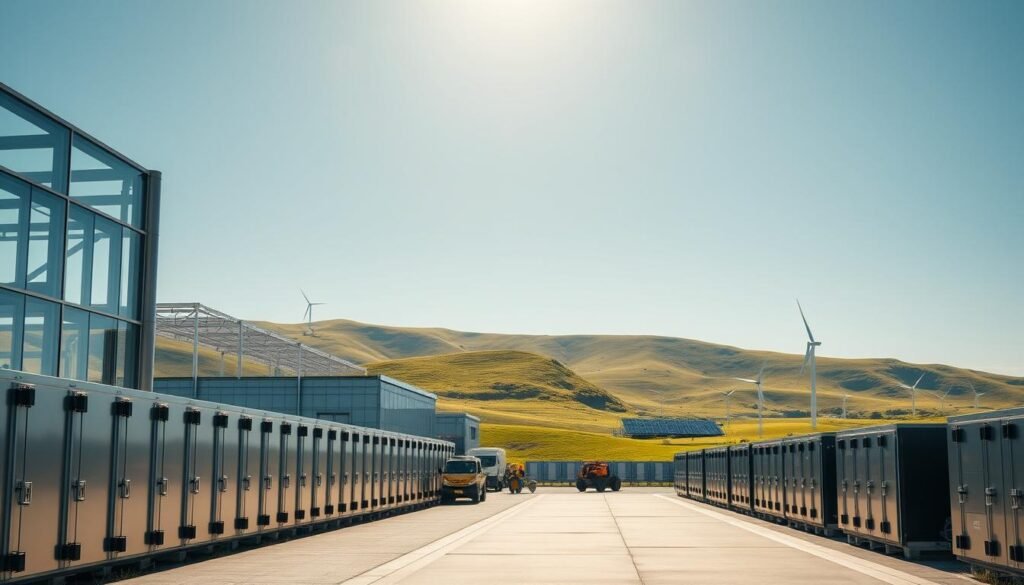
Hydrogen Economy: Australia’s New Frontier
The hydrogen economy is emerging as a pivotal element in Australia’s green energy transition. As the country moves towards a more sustainable energy future, the role of hydrogen is becoming increasingly significant.
Green Hydrogen Production Hubs
Australia is developing major green hydrogen production hubs, particularly in Western Australia and Queensland. These projects are crucial for the production of renewable hydrogen.
Major Projects in Western Australia and Queensland
Western Australia’s Pilbara region and Queensland’s Gladstone area are becoming focal points for green hydrogen production. These regions offer abundant renewable energy resources, making them ideal for large-scale hydrogen production.
Hydrogen Export Opportunities
Australia is well-positioned to become a significant exporter of green hydrogen, with the Asian market presenting substantial opportunities.
Asian Market Connections
Countries like Japan and South Korea are eager to import green hydrogen to meet their energy needs. Australia’s proximity and reliable supply make it an attractive partner.
Domestic Applications
Hydrogen is not only for export; it has significant domestic applications, particularly in transport and industrial sectors.
Transport and Industrial Uses
Hydrogen fuel cell technology is being adopted in transportation, offering a cleaner alternative to traditional fossil fuels. Industries are also exploring hydrogen as a replacement for natural gas in manufacturing processes.
As Australia continues to develop its hydrogen economy, the potential for growth in both domestic and international markets is vast.
The Australia Green Energy Transition: Policy Framework
As Australia moves towards a more sustainable energy future, the policy framework guiding this transition is becoming increasingly important. The government has implemented various policies to support the transition to renewable energy sources, ensuring a reliable and affordable energy supply.
Net Zero Policy Updates for 2025
The Australian government has been updating its net zero policy to align with international climate goals. The latest legislative changes aim to reduce greenhouse gas emissions and promote the adoption of renewable energy technologies.
Latest Legislative Changes
Recent legislative updates have focused on enhancing the country’s renewable energy targets and improving energy efficiency. These changes are expected to drive investment in clean energy projects and create new opportunities for businesses and households.
Renewable Energy Zones
Renewable energy zones (REZs) are being developed across Australia to facilitate the integration of large-scale renewable energy projects into the grid. These zones are critical for achieving the country’s renewable energy targets and reducing transmission costs.
Development Status and Investment
Several REZs are currently under development, with significant investment pouring in from both domestic and international stakeholders. The development of REZs is expected to create jobs and stimulate local economies.
| Renewable Energy Zone | Location | Capacity (MW) | Investment ($AUD) |
|---|---|---|---|
| Central West REZ | New South Wales | 3,000 | 4.5 billion |
| North West REZ | Victoria | 2,000 | 3.2 billion |
Carbon Pricing Mechanisms
Carbon pricing mechanisms are being used to encourage businesses to reduce their emissions. The Safeguard Mechanism is a key component of Australia’s carbon pricing framework, setting emissions limits for large industrial facilities.
Safeguard Mechanism and Future Directions
The Safeguard Mechanism is expected to play a crucial role in reducing Australia’s greenhouse gas emissions. Future directions for the mechanism include tightening emissions baselines and exploring new technologies to support emissions reduction.
For more detailed information on Australia’s green energy transition, refer to the latest research report.
Economic Impacts for Australian Households
As Australia accelerates its green energy transition, households are on the cusp of a new era in energy consumption, with the green energy transition bringing both challenges and opportunities. The economic impacts of this shift will be multifaceted, affecting energy bills, job markets, and overall cost of living.
Energy Bill Projections
The transition to renewable energy is expected to influence household energy bills significantly. In the short term, the costs associated with upgrading infrastructure and implementing new energy sources may lead to increased bills.
Short-term vs Long-term Cost Trends
While initial costs may rise, the long-term trend suggests a decrease in energy bills as renewable energy sources become more efficient and widespread.
Job Creation in Green Sectors
The green energy transition is not only about reducing carbon emissions; it’s also a significant source of new job opportunities. Sectors such as solar panel installation, wind farm maintenance, and energy efficiency consulting are expected to see substantial growth.
Training and Reskilling Opportunities
To capitalize on these new job opportunities, training and reskilling programs will be crucial. Governments and private organizations are investing in programs to equip workers with the necessary skills.
Cost of Living Considerations
The impact on the cost of living will vary across different households. Energy efficiency measures will play a key role in offsetting potential cost increases.
Energy Efficiency Measures to Offset Costs
Simple measures such as installing energy-efficient appliances, improving home insulation, and adopting smart home technologies can significantly reduce energy consumption and costs.
| Economic Impact | Short-term Effect | Long-term Effect |
|---|---|---|
| Energy Bills | Potential Increase | Decrease |
| Job Market | Job Displacement in Fossil Fuels | Job Creation in Green Sectors |
| Cost of Living | Potential Increase | Stabilization through Efficiency |
Challenges in the Transition to Renewable Energy
As Australia moves towards a greener energy future, several obstacles need to be addressed. The transition to renewable energy is complex and multifaceted, involving technological, economic, and social challenges.
Grid Infrastructure Limitations
The existing grid infrastructure in Australia is not fully equipped to handle the variable output from renewable sources. Upgrading this infrastructure is crucial for a successful transition.
Transmission Bottlenecks and Solutions
Transmission bottlenecks are a significant issue, limiting the efficient transfer of renewable energy across the country. Solutions include upgrading transmission lines and implementing advanced grid management technologies.
Intermittency Solutions
Renewable energy sources like solar and wind are intermittent, meaning their output varies with weather conditions. Addressing this challenge requires innovative solutions.
Demand Response Programs
Demand response programs are a key strategy, incentivizing consumers to adjust their energy usage during peak periods, thus balancing supply and demand.
Just Transition for Fossil Fuel Communities
The shift away from fossil fuels will impact communities that have traditionally relied on coal and gas industries. Ensuring a just transition for these communities is essential.
Support Programs for Coal Regions
Support programs, including retraining initiatives and economic diversification strategies, are vital for helping these regions adapt to the changing energy landscape.
The transition to renewable energy is a challenging but necessary step towards a sustainable future. By addressing grid infrastructure limitations, intermittency, and the needs of fossil fuel communities, Australia can navigate these challenges successfully.
How Citizens Can Participate in the Green Energy Revolution
The green energy revolution in Australia is not just about big infrastructure projects; it’s also about individual and community actions. Citizens can play a significant role in this transition by engaging in various initiatives and making informed choices.
Community Energy Projects
Community energy projects allow citizens to come together and invest in renewable energy. One such initiative is solar gardens and cooperatives, where individuals can participate in or benefit from collective solar energy generation.
Solar Gardens and Cooperatives
These models enable people to invest in or subscribe to solar energy projects, even if they cannot install solar panels on their own property. For example, Sustainable Works offers solutions for community solar projects.
Green Energy Consumer Choices
Citizens can also make a difference by choosing green energy options for their homes. This includes opting for GreenPower and selecting ethical electricity retailers that source their energy from renewable sources.
GreenPower and Ethical Electricity Retailers
GreenPower is a government-backed program that ensures a certain percentage of the electricity sold comes from renewable sources. Choosing an ethical retailer supports the growth of renewable energy in the grid.
Advocacy and Engagement Opportunities
Lastly, citizens can participate in the green energy revolution by advocating for change and engaging with their communities. Joining local climate action groups is a powerful way to contribute to the cause.
Local Climate Action Groups
These groups work at the grassroots level to promote climate action and sustainable living. By participating in or supporting these groups, citizens can help drive the transition to a greener future.
By engaging in these activities, Australians can contribute to a sustainable energy future and help achieve the country’s renewable energy targets.
Conclusion: Australia’s Renewable Energy Future
Australia’s green energy transition is gaining momentum, driven by the need to address climate change and capitalize on economic opportunities. As the country shifts towards a renewable energy future, citizens can expect a more sustainable energy landscape.
The transition is being driven by a combination of federal and state government policies, technological advancements, and changing consumer behaviors. With a growing focus on solar power, wind energy, and battery storage, Australia is poised to become a leader in the global renewable energy market.
As Australia continues on its path towards a renewable energy future, it is essential for citizens to stay informed and engaged in the green energy transition. By understanding the opportunities and challenges associated with this transition, Australians can contribute to a more sustainable energy future.
